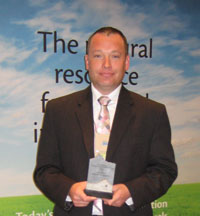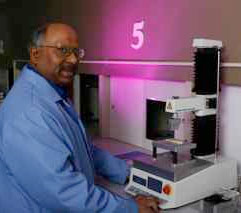“I hope people use this opportunity to take a hard look at their own dependence on oil. I hope they look to find ways to kick their oil addiction as soon as possible and to elect leaders that help us do the same as a nation,” said John Abraham Powell, President of Get Oil Out (GOO), a non-profit organization dedicated to helping Americans stop using oil and adopt alternative energy. Powell’s comments were in response to the LA Times news article that stated BP officials are concerned that the oil spill will soon release up to 2.5 million gallons of oil per day. If this comes to fruition, it would make this oil spill the largest in US history. Yes. Much, much larger than the Exxon Valdez oil spill.
 It is a tad ironic that BP is the culprit of such a devastating oil spill. Well before any other oil companies became involved in developing alternative energy technologies, BP, formerly British Petroleum, changed their name to Beyond Petroleum and began touting their devotion to alternative energy technologies– technologies that will ultimately replace oil when it disappears. Well, millions upon millions of gallons of their petroleum has now “disappeared” and “reappeared” right into one of the most sensitive wetland areas in the country. We need Houdini to develop a trick where the oil reappears in our gas tanks, but alas, I fear that even the great Houdini couldn’t pull off a trick like this.
It is a tad ironic that BP is the culprit of such a devastating oil spill. Well before any other oil companies became involved in developing alternative energy technologies, BP, formerly British Petroleum, changed their name to Beyond Petroleum and began touting their devotion to alternative energy technologies– technologies that will ultimately replace oil when it disappears. Well, millions upon millions of gallons of their petroleum has now “disappeared” and “reappeared” right into one of the most sensitive wetland areas in the country. We need Houdini to develop a trick where the oil reappears in our gas tanks, but alas, I fear that even the great Houdini couldn’t pull off a trick like this.
ExxonMobil couldn’t pull of this trick either. Decades after the Exxon Valdez Oil Spill off the coast of Alaska, ExxonMobil is still struggling with the consumer backlash, in part, due to their inappropriate response to the cleanup initiatives or more specifically, lack thereof. To this day, they never fulfilled their cleanup requirements. Will the same fate befall BP?Read More


 The
The  Among this year’s honorees is Robert White, Director of Market Development for the
Among this year’s honorees is Robert White, Director of Market Development for the  Despite the fact that total revenues of $13.0 million were down $1.4 million compared to last year,
Despite the fact that total revenues of $13.0 million were down $1.4 million compared to last year, 

 In lab studies, Krishnan and his colleagues found that using DDGS to make up 10 percent of the dough in chapathi, an Asian whole wheat unleavened bread eaten in South Asia and East Africa, boosted the fiber from 2.9 percent to 7.8 percent, while using 20 percent DDGS in the dough increased the fiber to 10.3 percent. Protein content also increased by using DDGS in the dough, up to 15.3 percent by adding 20 percent to the dough.
In lab studies, Krishnan and his colleagues found that using DDGS to make up 10 percent of the dough in chapathi, an Asian whole wheat unleavened bread eaten in South Asia and East Africa, boosted the fiber from 2.9 percent to 7.8 percent, while using 20 percent DDGS in the dough increased the fiber to 10.3 percent. Protein content also increased by using DDGS in the dough, up to 15.3 percent by adding 20 percent to the dough. In a court brief filed last week, the
In a court brief filed last week, the  However,
However, 


